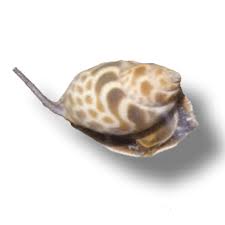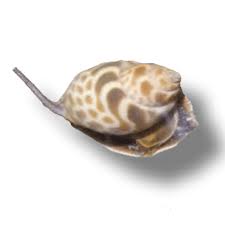Blotchy Nassarius Snails:
Blotchy Nassarius Snails: The Efficient Clean-Up Crew for Your Reef Tank

Blotchy Nassarius snails, also known as Tiger Nassarius, Brown Blotched snails, or Orange Spot Butterscotch snails, are an intriguing addition to marine aquariums. With their distinctive appearance and valuable cleaning abilities, they play a vital role in maintaining a healthy aquatic environment.
Key Characteristics:
Blotchy Nassarius snails typically grow to around 2.5 inches in captivity, making them one of the larger species of Nassarius snails suitable for reef tanks. Their scavenging behavior and efficient cleaning abilities make them invaluable members of any clean-up crew.
Behavior and Habitat:
These snails exhibit typical Nassarius behavior, burying themselves in the sand until they detect food. They primarily feed on meaty foods such as frozen mysis and brine shrimp. Their natural habitat ranges from coastal to shallow marine environments, where they inhabit sandy substrates.
Sand Aeration and Cleaning:
One of the standout features of blotchy Nassarius snails is their sand-stirring behavior. By churning and turning the sand, they help aerate the substrate, preventing the formation of anaerobic dead spots and contributing to overall tank health.
Care and Compatibility:
Blotchy Nassarius snails are generally easy to care for in a well-maintained marine aquarium. They require a sandy substrate for burrowing and access to organic matter for feeding. While they are generally peaceful, caution should be exercised in reef tanks with very fine sand substrates.
Benefits to the Aquarium:
These snails offer numerous benefits to the aquarium ecosystem. By consuming leftover food and detritus, they help prevent ammonia spikes and maintain water quality. Additionally, their sand-stirring behavior promotes a healthy substrate environment.
Conclusion:
In conclusion, blotchy Nassarius snails are valuable additions to any marine aquarium. With their efficient cleaning abilities and sand-stirring behavior, they contribute to the overall health and balance of the tank. For hobbyists looking to maintain a thriving reef environment, these snails are indispensable allies.



